Boat people of Tonle Sap
|
Tonle Sap is the largest freshwater lake in South East Asia. It is located about 10 miles south of Angkor Wat, Siem Reap, Cambodia. |

|
|
Tonle Sap was designated as a UNESCO biosphere site in 1997. The huge body of water stretches across the northwest section of Cambodia. It is about 50 miles long and supports a delicate ecosystem of more than 100 varieties of water birds and 200 species of fish, crocodiles, turtles, etc. |
|
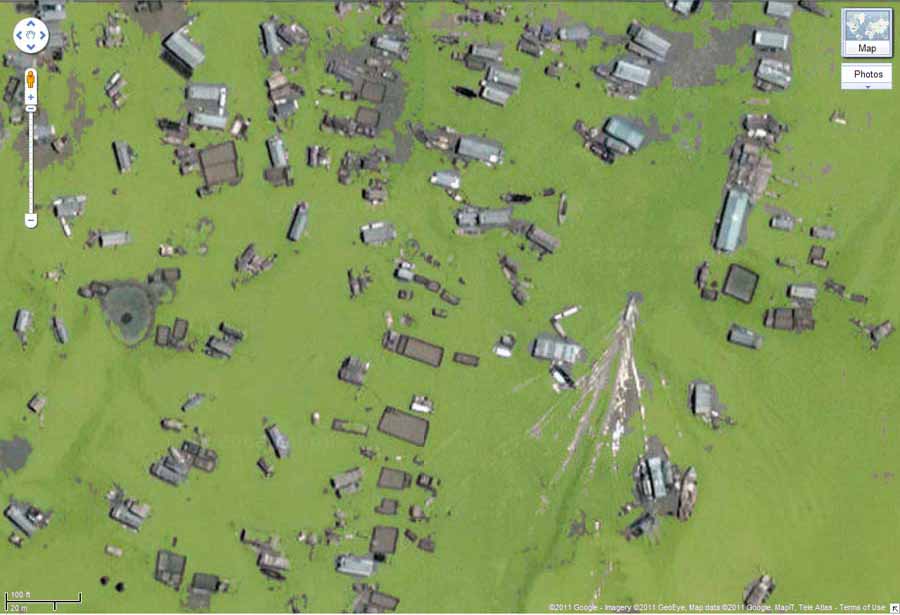
|
|
From the satellite, the greyish dark objects were stilted houses built on water. One could even see the wake made by a motor boat passing by the village (Photo courtesy of Google Maps). |
|
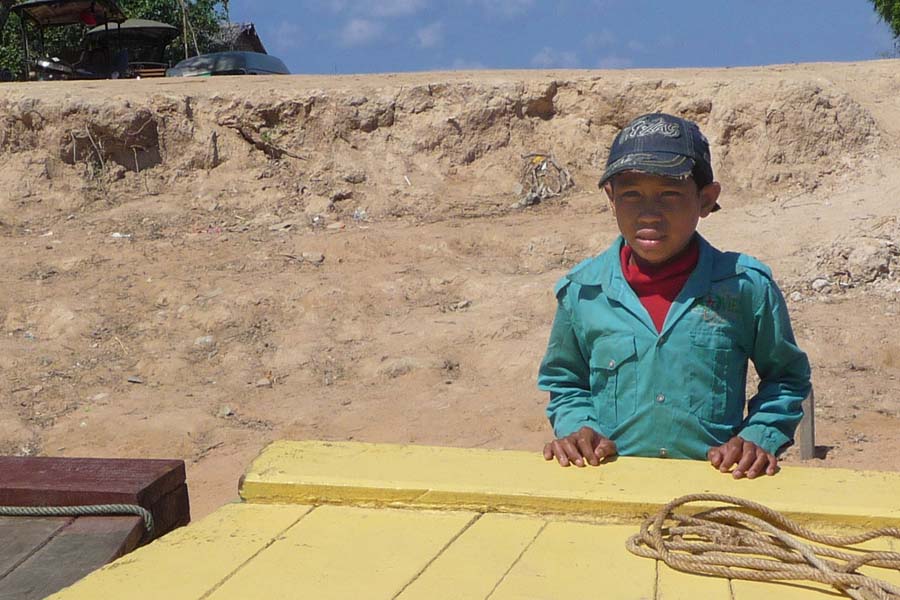
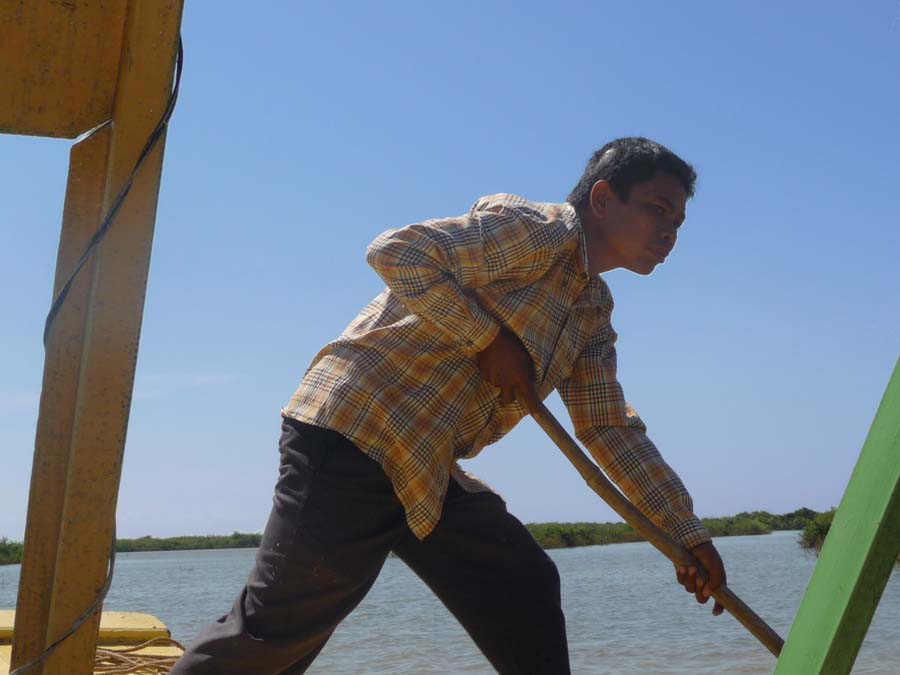
|
|
The dusty road from Siem Reap ended in a makeshift pier where one could board a boat to go to the Tonle Sap floating villages. This boat was operated by a father-and-son team. |
|
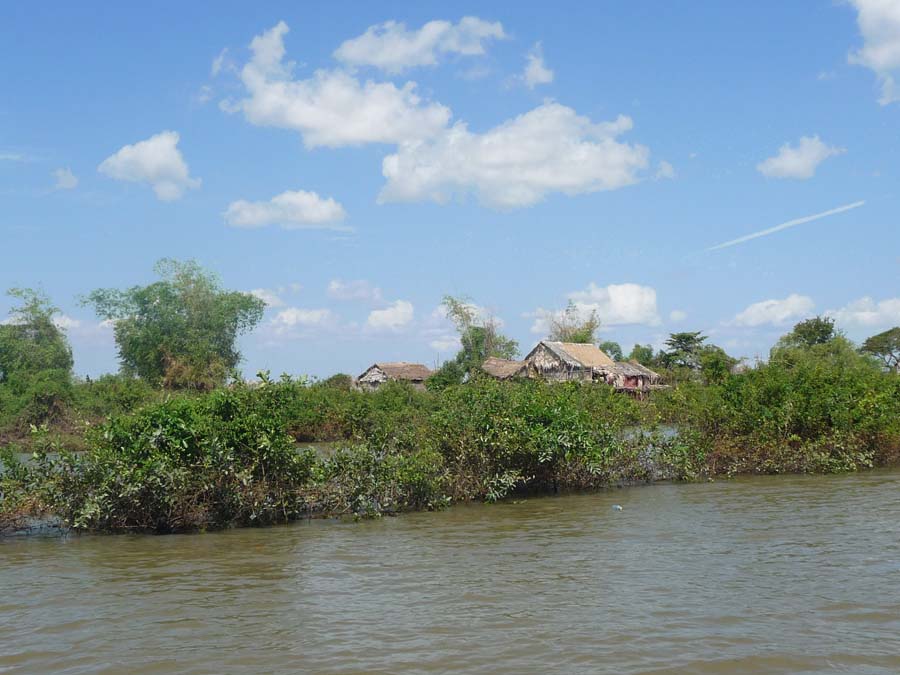
|
|
Tonle Sap was both a lake and a swamp which in turn connected to the Mekong River. Water level varied by as much as 30 feet between the wet and the dry season. |
|
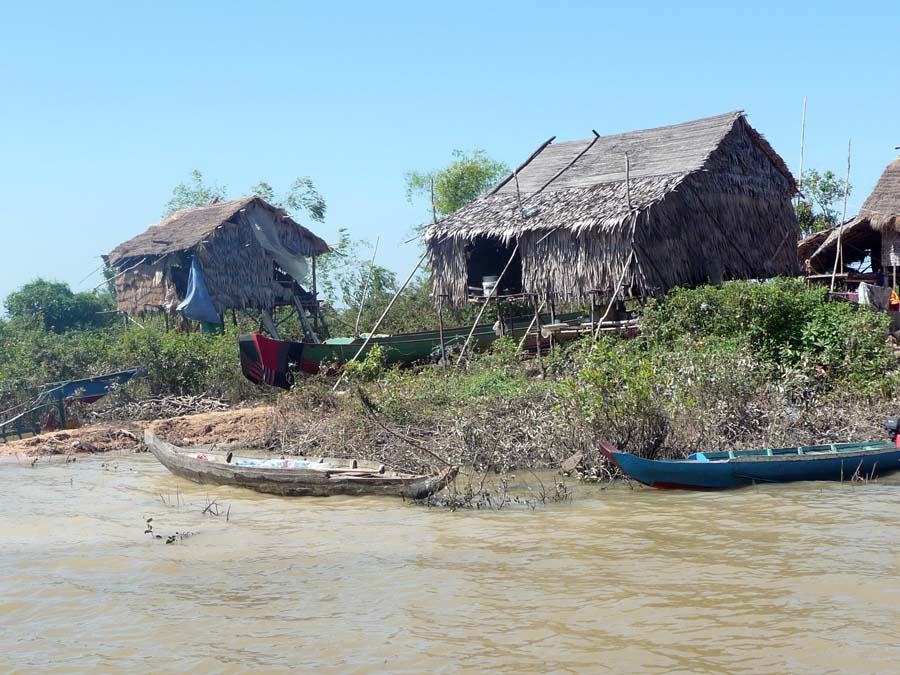
|
|
During the monsoon season, the size of the lake could expand by as much as 6 times. |
|
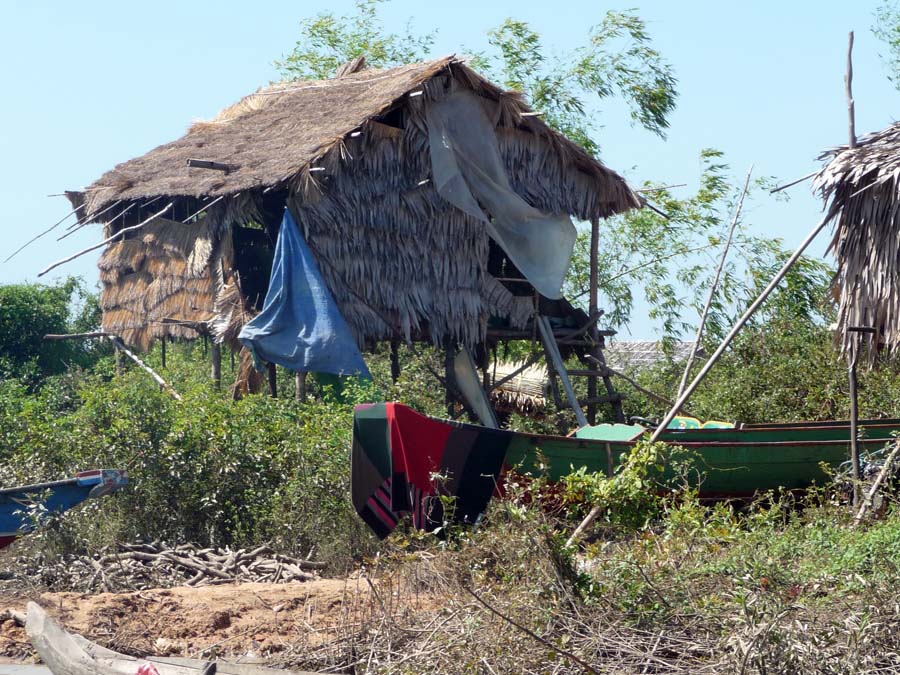
|
|
Stilted houses were built along the waterways. |
|
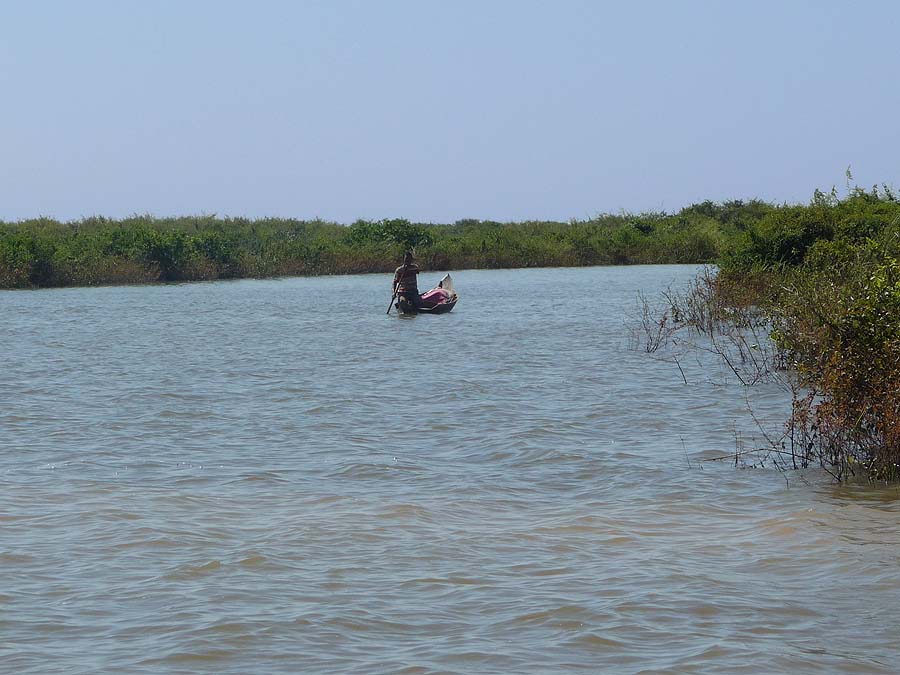
|
|
Fishermen meandered their boats on the waterways through marshlands and mangrove forests. |
|
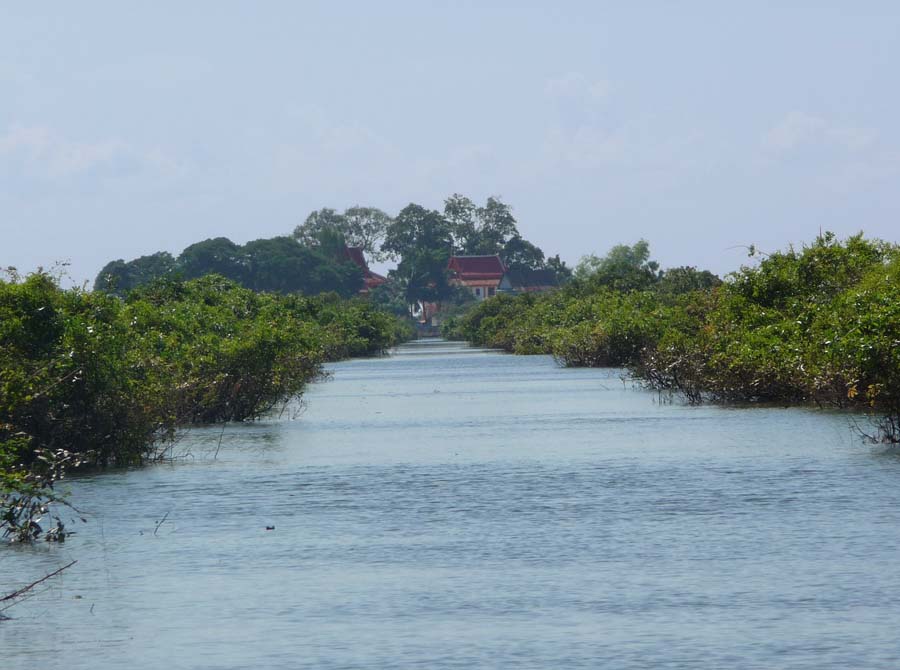
|
|
After about 30 minutes of travel, an island with a temple emerged at the end of the waterway. |
|
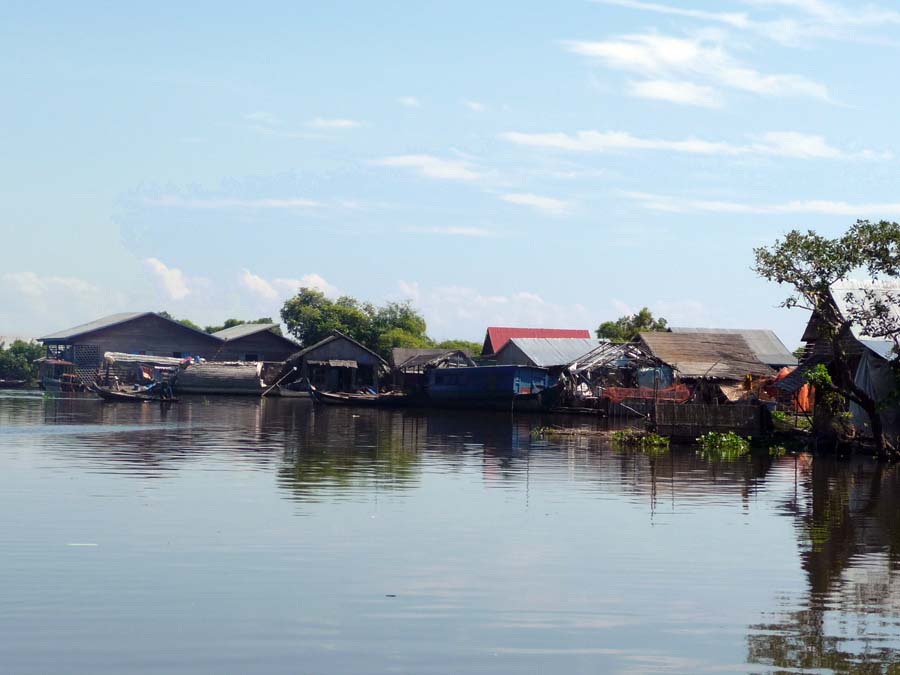
|
|
About 1,000 people lived on this side of the lake shared by the Khmer and ethnic Vietnamese. |
|
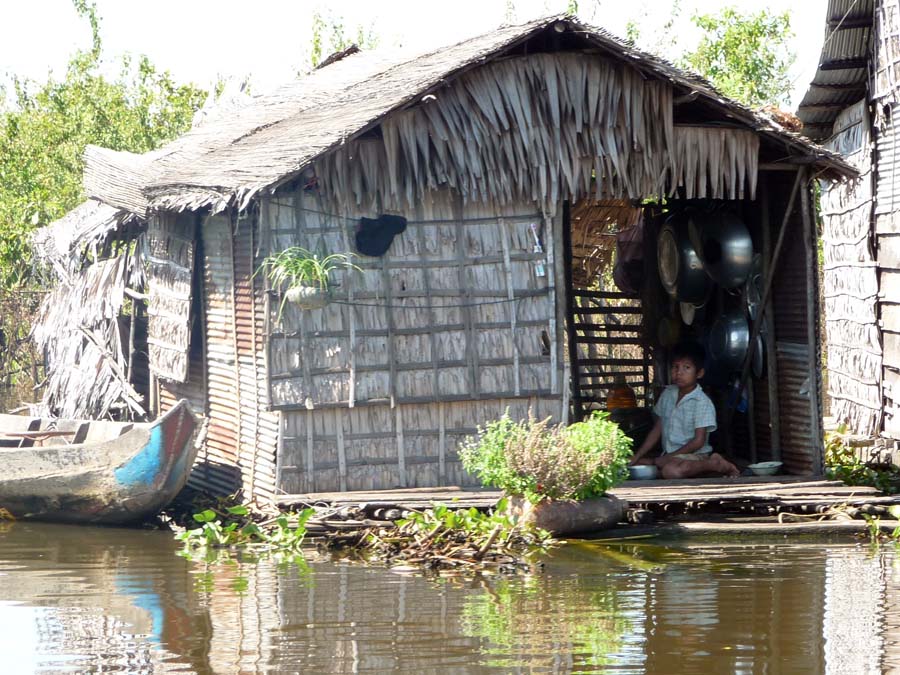
|
|
Some dwellings were built on stilts in the shallow water. |
|
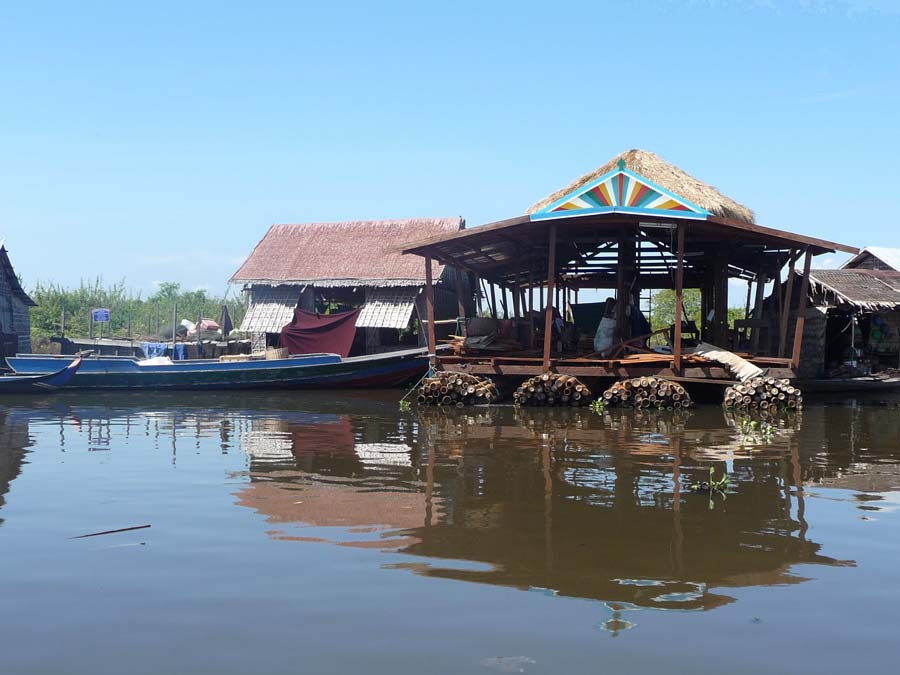
|
|
While others were on floating platforms on boats, barges or bundles of bamboos. |
|
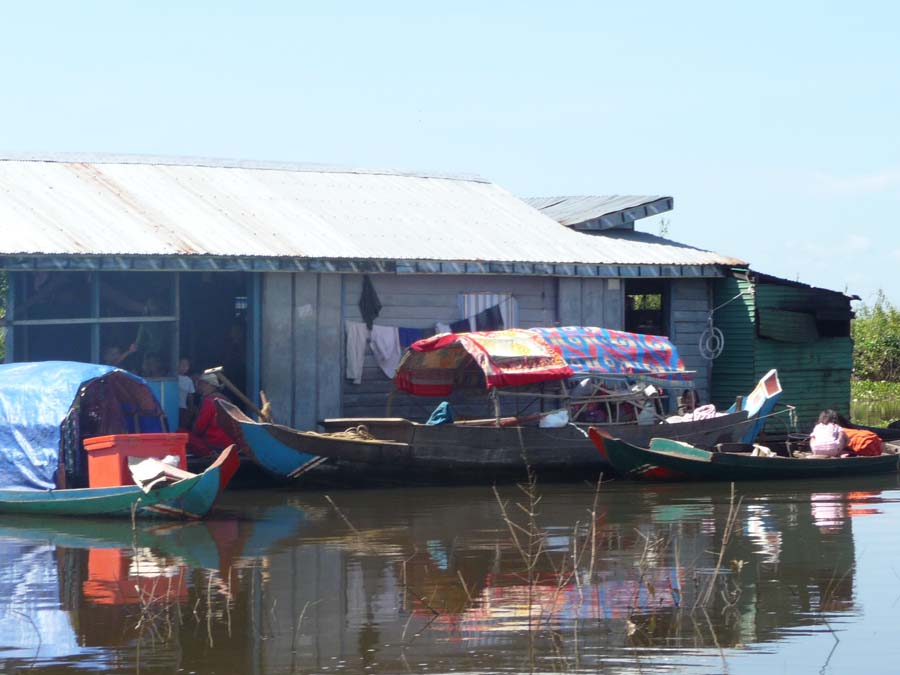
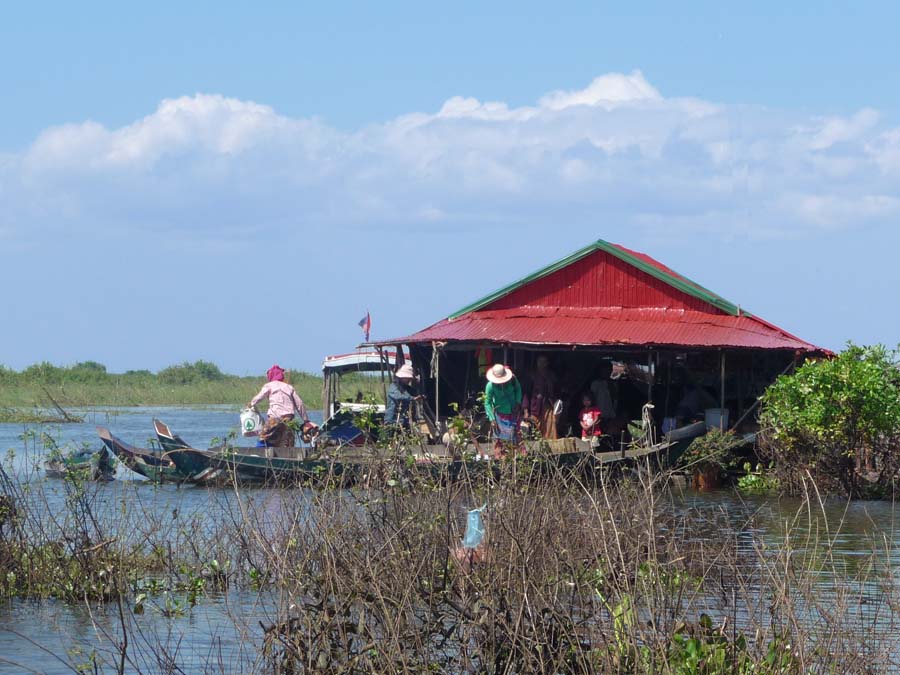
|
|
Some dwellings had tin roofs. |
|
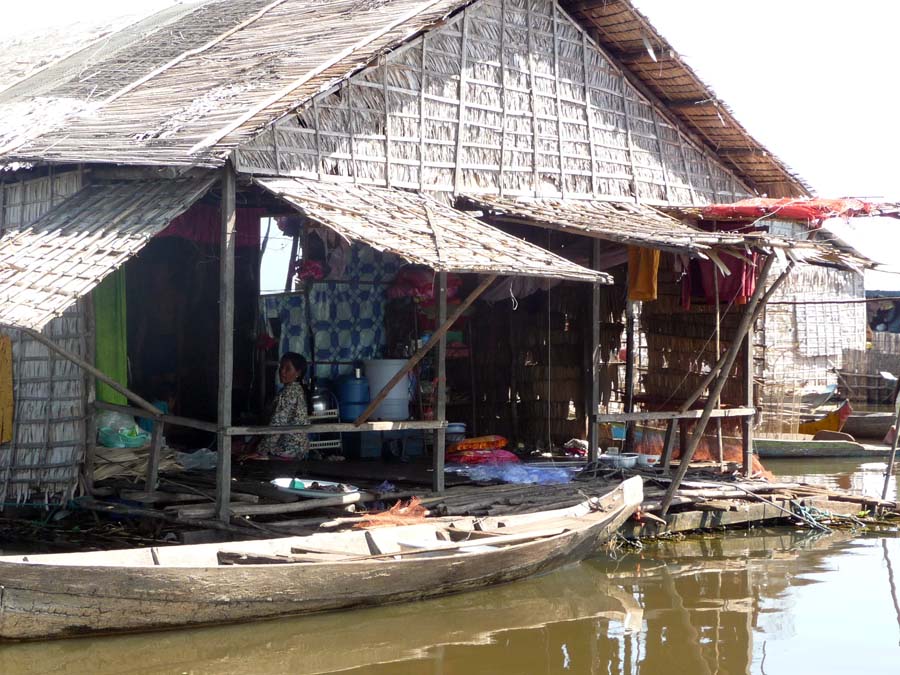
|
|
Some had straw roofs. |
|
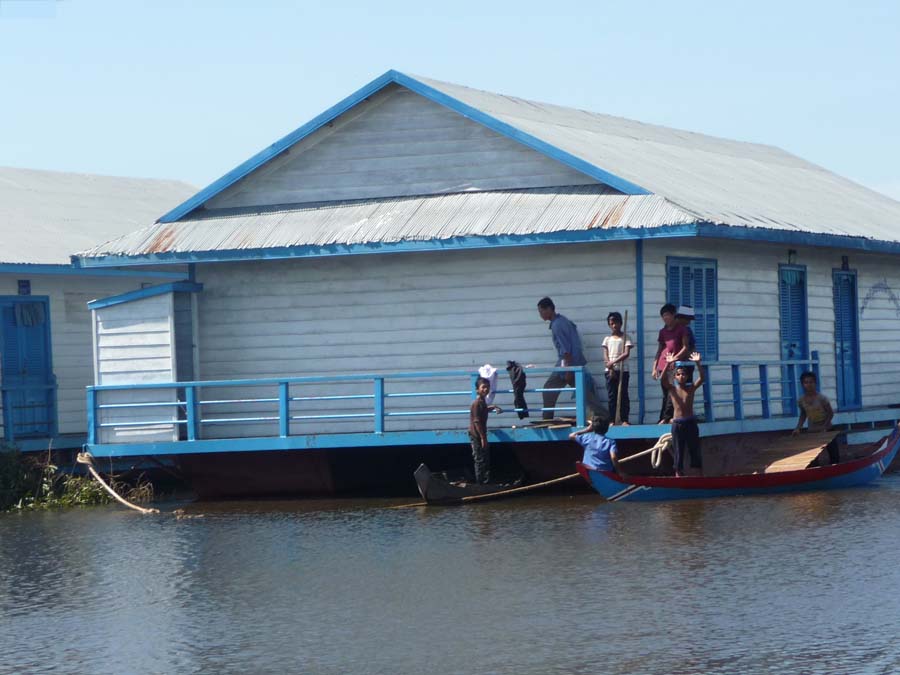
|
|
There was a floating school in the village. |
|
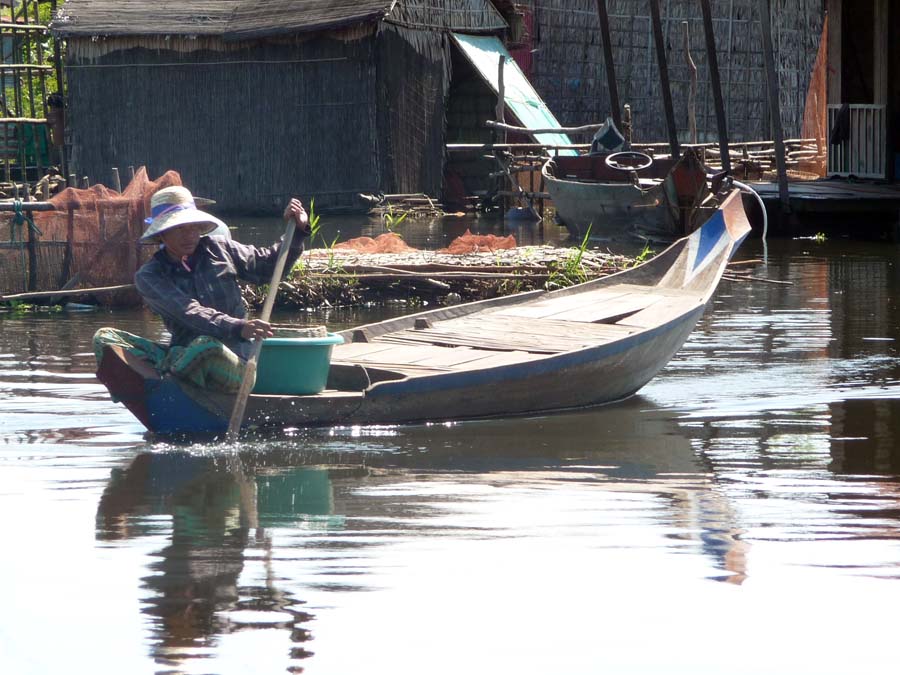
|
|
Boat was the only mode of transportation in this water world. |
|
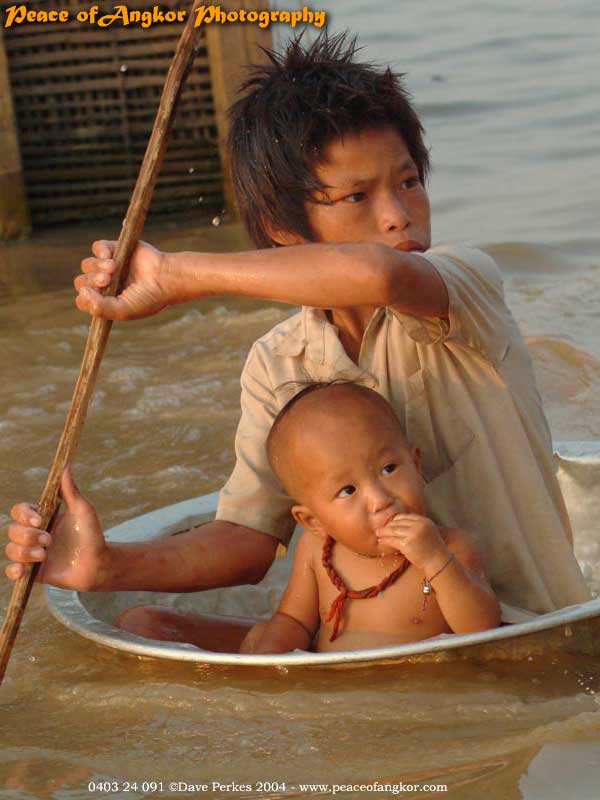
|
|
A Personal Boat on the lake (Photo courtesy of Dave Perkes, Flickr 2004). |
|
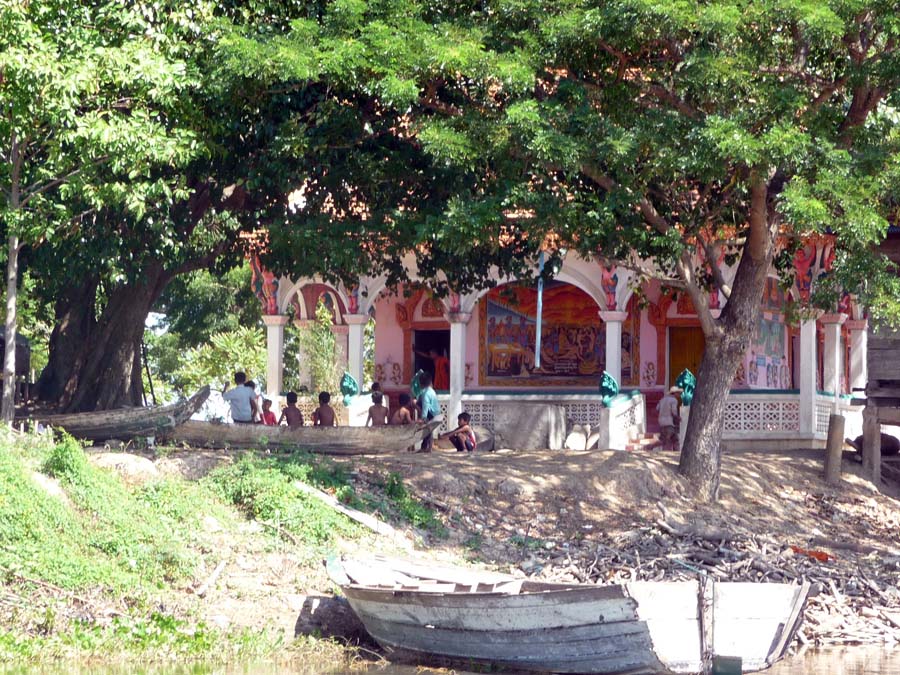
|
|
At the center of this village was a small island with a temple. It was the focus of the community. |
|
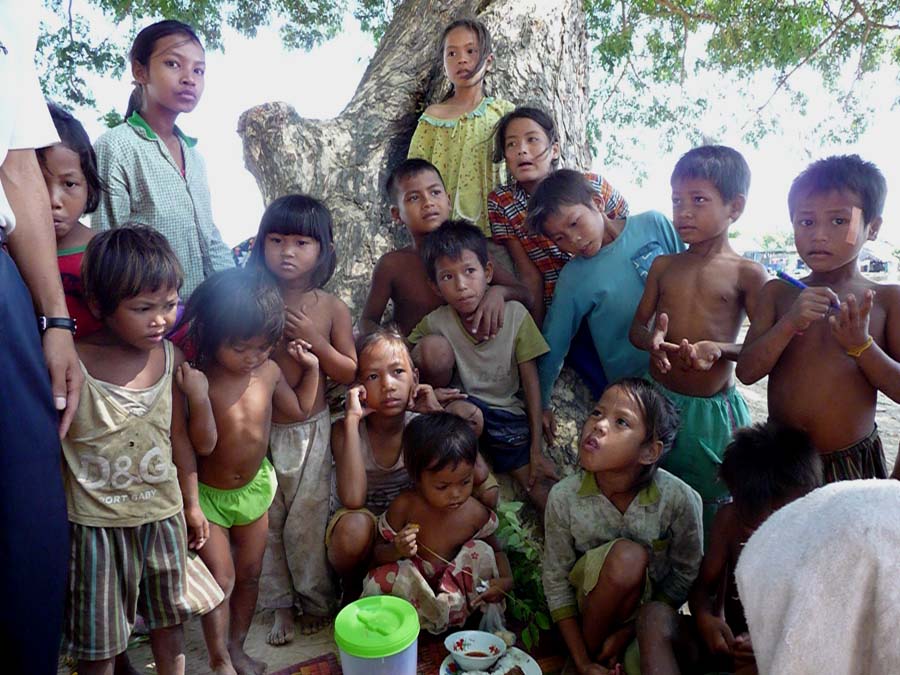
|
|
Dozens and dozens of children played in the "Uptown district". |
|
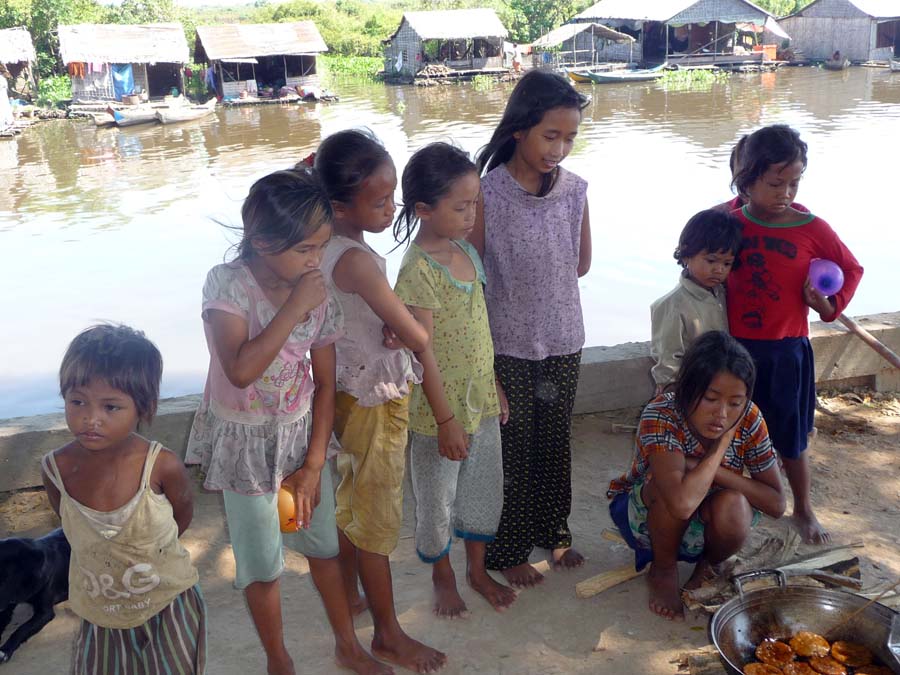
|
|
Some food was sold in this social networking hub. |
|
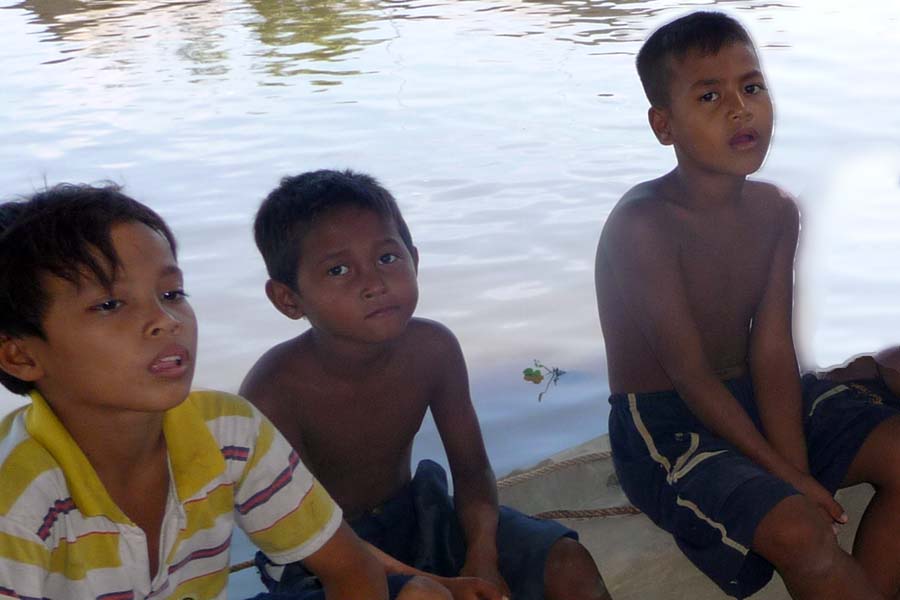
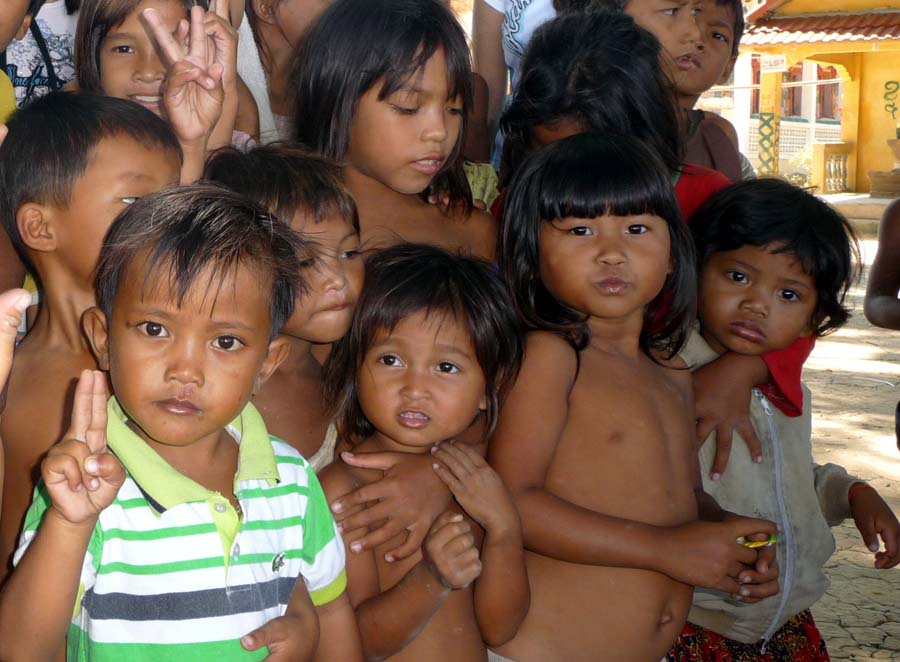
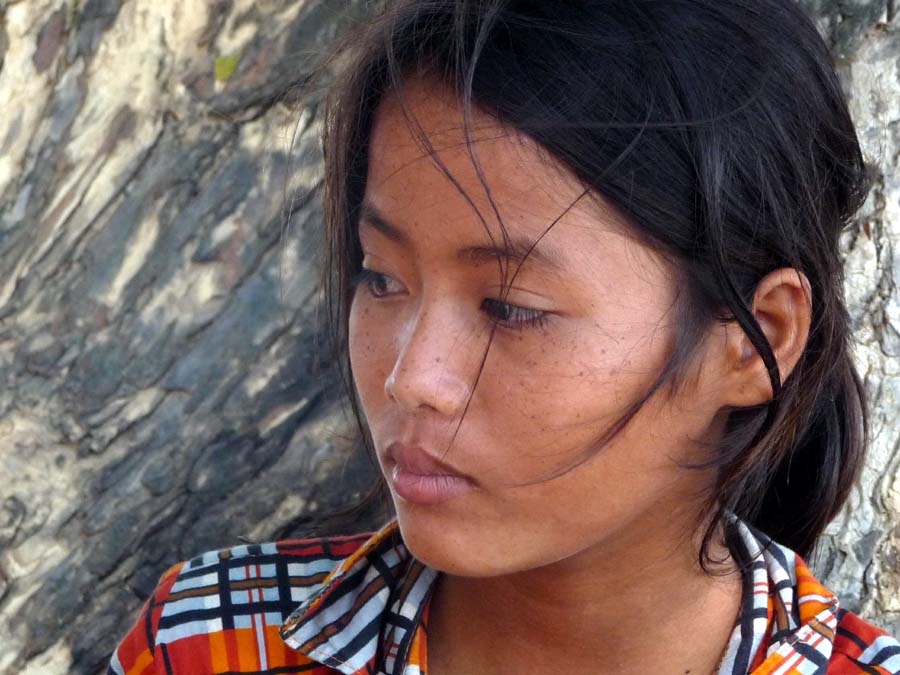
|
|
Since many of these boat people did not have a fixed address, they were unable to secure permanent residency or receive social benefits from the Cambodia government. |
|
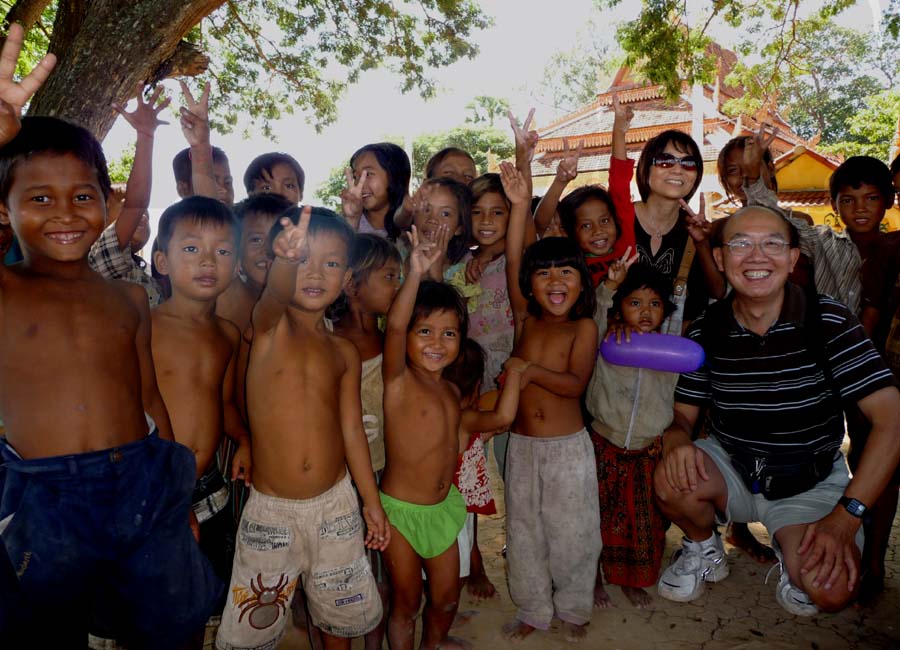
|
|
The residents were absolutely friendly and it was quite an experience visiting the boat village. |
|